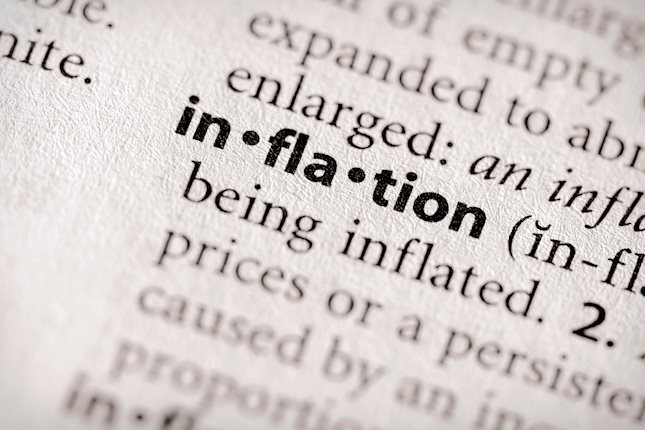- Indian Rupee edges higher in a quiet session on Monday
- The Reserve Bank of India (RBI) is expected to cut rates by 25 bps in each of the third and fourth quarters.
- Investors await India’s CPI inflation data due on Monday at 12:00 GMT.
Indian Rupee (INR) recovers on Monday amid muted early trading, with most Asian markets closed. India’s Consumer Price Index (CPI) for January will take center stage at the beginning of the week. The Reserve Bank of India (RBI) maintained its repo rate at 6.50% for a sixth consecutive meeting on February 8, citing food price shocks as a significant risk to the current disinflation trend.
The Indian central bank is anticipated to leave its key policy rate unchanged until the June meeting before cutting it by 25 basis points (bps) in each of the third and fourth quarters, a relatively moderate move compared to other major central banks' easing cycles.
On the other hand, the robust US economic data and pushback from Fed officials on market expectations of early rate cuts boost the USD and lift the US bond yield, which acts as a tailwind for the USD/INR pair.
Moving on, India’s CPI inflation data, Industrial Production, and Manufacturing Output are due on Monday at 12.00 GMT. The Wholesale Price Index (WPI) Food, Fuel, and Inflation for January will be released on Wednesday.
On the US docket, the January CPI report will be in the spotlight on Tuesday. The headline Consumer Price Index (CPI) is expected to slow from 3.4% in December to 3.0% in January. The inflation reports over the next few months could be critical in determining the timeline for when the Fed will cut its benchmark interest rate.
Daily Digest Market Movers: Indian Rupee remains vulnerable to high inflation and global factors
- The headline CPI inflation was forecast to fall to 5.09% in January from 5.69% in December.
- Inflation will average 5.4% this fiscal year and 4.7% in the next, close to the RBI's forecasts of 5.4% and 4.5%, according to a Reuters poll.
- Indian bond yields jumped after the RBI rate decision, with the 10-year benchmark bond yield closing at 7.1067% on Friday, the highest since January 31.
- The revised CPI figures rose by 0.2% in December from the previous month, compared to the initial estimate of 0.3%, according to the Bureau of Labor Statistics on Friday.
- Dallas Fed President Lorie Logan said that she is not in a hurry to cut interest rates. She added that although there has been "tremendous progress" in decreasing inflation, additional data is needed to confirm the progress is durable.
Technical Analysis: Indian Rupee faces further range-bound movement in the longer-term
Indian Rupee trades strongly on the day. USD/INR remains confined within a multi-month descending trend channel between 82.70 and 83.20.
In the near term, the pair is below the key 100-period Exponential Moving Average (EMA) in the daily timeframe, suggesting the sellers are likely to stay in control. Furthermore, the 14-day Relative Strength Index (RSI) lies below the 50.0 midline, hinting that support levels are more likely to break than to hold.
If sellers take back control of USD/INR, the initial support level is seen at a low of February 2 at 82.83. The critical upside barrier will emerge near the lower limit of the descending trend channel at 82.70. Sustained bearish pressure could still pave the way to a low of August 23 at 82.45, followed by a low of June 1 at 82.25.
In the case of a bullish trading environment, the confluence of the upper boundary of the descending trend channel, the psychological round figure, and the 100-period EMA at the 83.00–83.05 zone act as a key resistance level for USD/INR. A clear upside breakout above this region will move towards a high of January 18 at 83.20. We may see a trip to a high of January 2 at 83.35, and the 84.00 psychological level if there’s enough bullish momentum.
US Dollar price today
The table below shows the percentage change of US Dollar (USD) against listed major currencies today. US Dollar was the weakest against the Canadian Dollar.
| USD | EUR | GBP | CAD | AUD | JPY | NZD | CHF | |
| USD | 0.07% | 0.07% | 0.02% | 0.05% | 0.04% | 0.28% | 0.04% | |
| EUR | -0.07% | 0.00% | -0.05% | -0.01% | -0.03% | 0.21% | -0.03% | |
| GBP | -0.07% | 0.00% | -0.06% | -0.01% | -0.04% | 0.20% | -0.04% | |
| CAD | -0.02% | 0.05% | 0.06% | 0.04% | 0.02% | 0.26% | 0.02% | |
| AUD | -0.07% | 0.00% | 0.00% | -0.05% | -0.03% | 0.21% | -0.03% | |
| JPY | -0.04% | 0.03% | 0.06% | -0.01% | 0.02% | 0.24% | 0.00% | |
| NZD | -0.30% | -0.22% | -0.21% | -0.26% | -0.24% | -0.25% | -0.25% | |
| CHF | -0.02% | 0.05% | 0.03% | 0.00% | 0.04% | 0.02% | 0.24% |
The heat map shows percentage changes of major currencies against each other. The base currency is picked from the left column, while the quote currency is picked from the top row. For example, if you pick the Euro from the left column and move along the horizontal line to the Japanese Yen, the percentage change displayed in the box will represent EUR (base)/JPY (quote).
Indian Rupee FAQs
What are the key factors driving the Indian Rupee?
The Indian Rupee (INR) is one of the most sensitive currencies to external factors. The price of Crude Oil (the country is highly dependent on imported Oil), the value of the US Dollar – most trade is conducted in USD – and the level of foreign investment, are all influential. Direct intervention by the Reserve Bank of India (RBI) in FX markets to keep the exchange rate stable, as well as the level of interest rates set by the RBI, are further major influencing factors on the Rupee.
How do the decisions of the Reserve Bank of India impact the Indian Rupee?
The Reserve Bank of India (RBI) actively intervenes in forex markets to maintain a stable exchange rate, to help facilitate trade. In addition, the RBI tries to maintain the inflation rate at its 4% target by adjusting interest rates. Higher interest rates usually strengthen the Rupee. This is due to the role of the ‘carry trade’ in which investors borrow in countries with lower interest rates so as to place their money in countries’ offering relatively higher interest rates and profit from the difference.
What macroeconomic factors influence the value of the Indian Rupee?
Macroeconomic factors that influence the value of the Rupee include inflation, interest rates, the economic growth rate (GDP), the balance of trade, and inflows from foreign investment. A higher growth rate can lead to more overseas investment, pushing up demand for the Rupee. A less negative balance of trade will eventually lead to a stronger Rupee. Higher interest rates, especially real rates (interest rates less inflation) are also positive for the Rupee. A risk-on environment can lead to greater inflows of Foreign Direct and Indirect Investment (FDI and FII), which also benefit the Rupee.
How does inflation impact the Indian Rupee?
Higher inflation, particularly, if it is comparatively higher than India’s peers, is generally negative for the currency as it reflects devaluation through oversupply. Inflation also increases the cost of exports, leading to more Rupees being sold to purchase foreign imports, which is Rupee-negative. At the same time, higher inflation usually leads to the Reserve Bank of India (RBI) raising interest rates and this can be positive for the Rupee, due to increased demand from international investors. The opposite effect is true of lower inflation.
Information on these pages contains forward-looking statements that involve risks and uncertainties. Markets and instruments profiled on this page are for informational purposes only and should not in any way come across as a recommendation to buy or sell in these assets. You should do your own thorough research before making any investment decisions. FXStreet does not in any way guarantee that this information is free from mistakes, errors, or material misstatements. It also does not guarantee that this information is of a timely nature. Investing in Open Markets involves a great deal of risk, including the loss of all or a portion of your investment, as well as emotional distress. All risks, losses and costs associated with investing, including total loss of principal, are your responsibility. The views and opinions expressed in this article are those of the authors and do not necessarily reflect the official policy or position of FXStreet nor its advertisers. The author will not be held responsible for information that is found at the end of links posted on this page.
If not otherwise explicitly mentioned in the body of the article, at the time of writing, the author has no position in any stock mentioned in this article and no business relationship with any company mentioned. The author has not received compensation for writing this article, other than from FXStreet.
FXStreet and the author do not provide personalized recommendations. The author makes no representations as to the accuracy, completeness, or suitability of this information. FXStreet and the author will not be liable for any errors, omissions or any losses, injuries or damages arising from this information and its display or use. Errors and omissions excepted.
The author and FXStreet are not registered investment advisors and nothing in this article is intended to be investment advice.
Recommended content
Editors’ Picks

EUR/USD trades deep in red below 1.0300 after strong US jobs report
EUR/USD stays under bearish pressure and trades below 1.0300 in the American session on Friday. The US Dollar benefits from the upbeat jobs report, which showed an increase of 256,000 in Nonfarm Payrolls, and forces the pair to stay on the back foot heading into the weekend.

GBP/USD drops toward 1.2200 on broad USD demand
GBP/USD extends its weekly slide and trades at its weakest level since November 2023 below 1.2250. The data from the US showed that Nonfarm Payrolls rose by 256,000 in December, fuelling a US Dollar rally and weighing on the pair.

Gold ignores upbeat US data, approaches $2,700
Following a drop toward $2,660 with the immediate reaction to strong US employment data for December, Gold regained its traction and climbed towards $2,700. The risk-averse market atmosphere seems to be supporting XAU/USD despite renewed USD strength.

Sui bulls eyes for a new all-time high of $6.35
Sui price recovers most of its weekly losses and trades around $5.06 at the time of writing on Friday. On-chain metrics hint at a rally ahead as SUI’s long-to-short ratio reaches the highest level in over a month, and open interest is also rising.

Think ahead: Mixed inflation data
Core CPI data from the US next week could ease concerns about prolonged elevated inflation while in Central and Eastern Europe, inflation readings look set to remain high.

Best Forex Brokers with Low Spreads
VERIFIED Low spreads are crucial for reducing trading costs. Explore top Forex brokers offering competitive spreads and high leverage. Compare options for EUR/USD, GBP/USD, USD/JPY, and Gold.